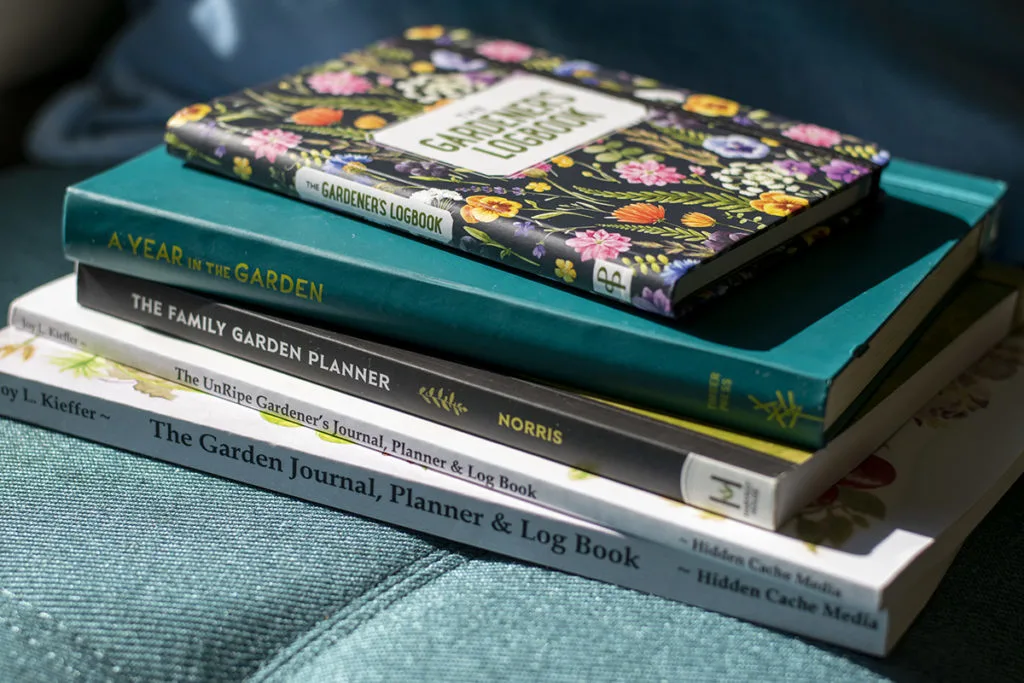
If you read Lydia’s post, 15 Seed Starting Lessons I Learned the Hard Way (and you should, by the way), then you know that #12 is all about documenting your growing season.
I’m terribly remiss in this area.
I’m that person who thinks they’ll remember which Saturday it was when I started my seeds. Or what variety of tomato I grew last year that was incredibly tasty. I know it was red, but aside from that, I can’t remember its name.
Super helpful, right?
It’s funny because my dad is the exact opposite, and he taught me everything I know when it comes to gardening.
He keeps a gardening journal year-round, even in the winter. Every day he notes the temperature; he notes what he picked from the garden that day. Suppose there were deer in the garden; that gets written down too. Was it an especially bad year for blossom end rot? Is that the first robin of spring? Yup, it all gets noted.
Needless to say, all of this information is useful when planning next year’s garden or learning from past mistakes.
Wouldn’t it be handy if there were dedicated planners just for gardening?
Oh, wait! There are.
And I picked up five of them to review for the Rural Sprout gardening community.
I have to say, folks, I was pleasantly surprised. There’s a gardening planner here for everyone.
And each of them is under $20.
Let’s jump in and take a closer look together.
A quick note
I decided to choose planners from Amazon. I know there are other planners out there, but nearly everyone has access to Amazon, so that’s where I restricted my search. Beyond that, I chose planners based on Amazon’s recommendations and the reviews for the planners.
1. The Garden Journal, Planner & Log Book
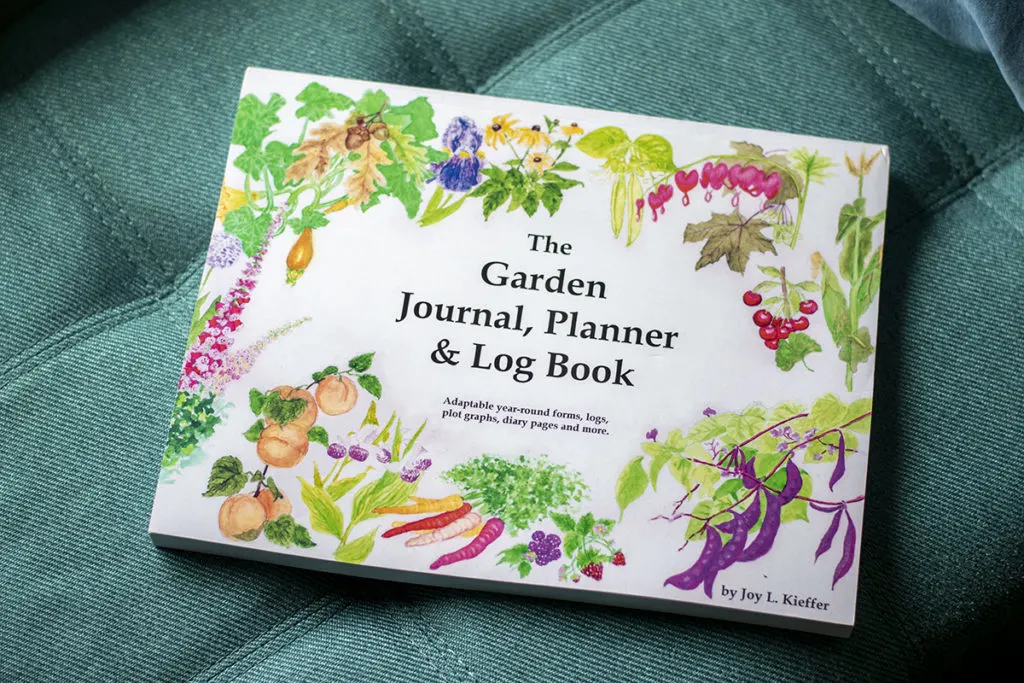
Aside from TGJPLB’s ridiculously long name, this little book is a gem. And as far as the amount of information you can record, it’s hardly little.
The planner is set up with forms you fill in for one growing year per planner. And my goodness, I can’t seem to think of any gardening information that you would want to record that’s been left out.
Here’s a quick rundown of all the forms included:
- Supplier contact list
- Purchase record pages
- A weather log
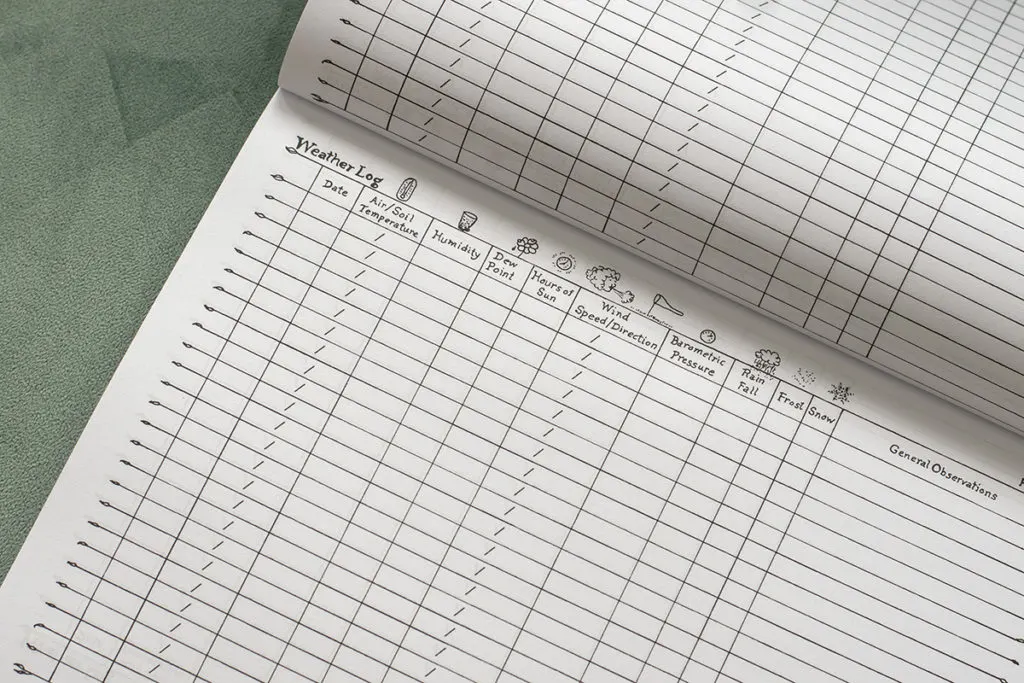
- Pages for bloom & harvest times
- Garden layout pages – one page of graph paper and the other page lined for notes – I love this!
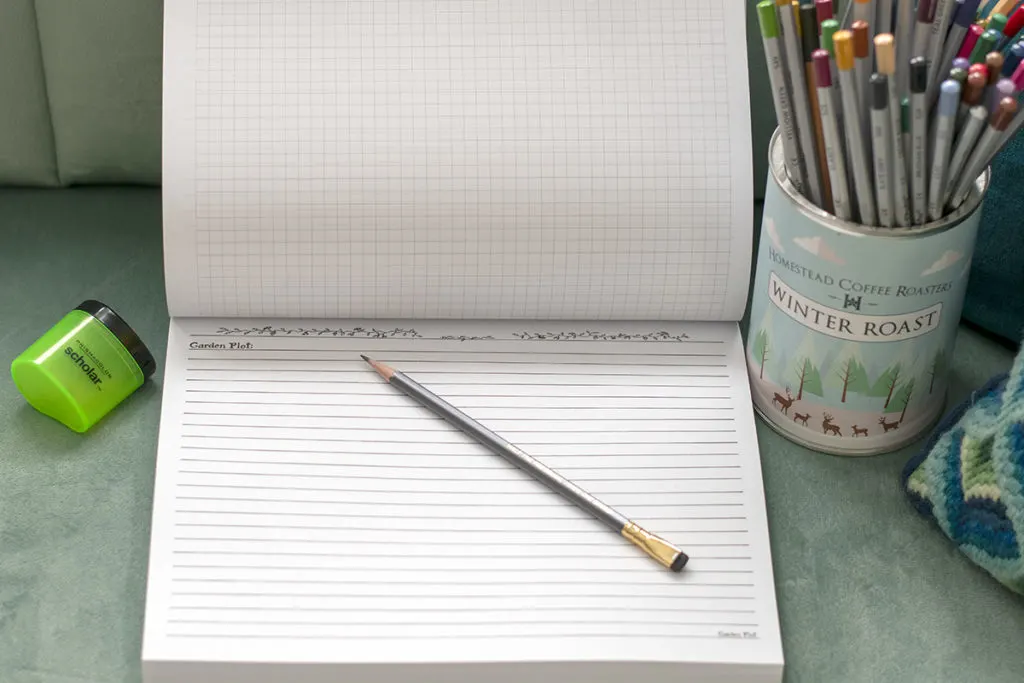
- Plant information pages to record specific information for the plants you grew that year logs for the types of plants you’re growing – annuals, biennials and perennials, even logs for bulbs
- There are pages for fruit, veggies, herbs, vining plants, shrubs and trees
- There are even pages to record hardscaping; if you decide to put in something like a water feature this year, there’s a place to document it in this planner
- Wildlife sighting pages (dad would love this)
- There are plenty of plain diary pages too to record thoughts or comments about the growing season
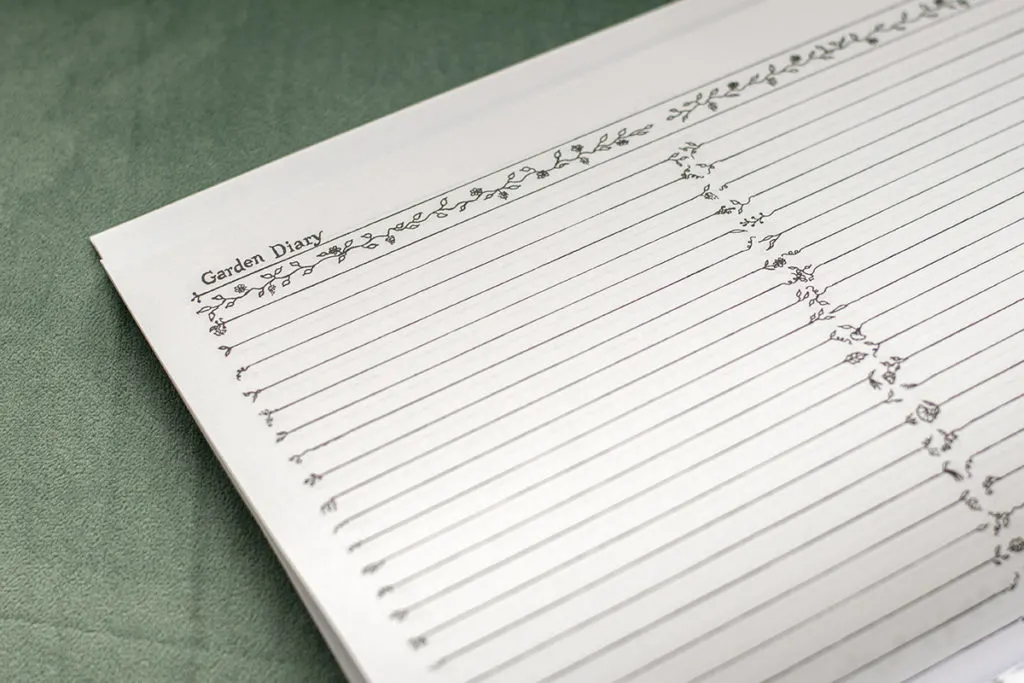
- There are pages to plan out your entire growing year
- You can log pruning activity and days when you tidied up your garden
- Pages to record disease and pest control and even pages to write down the formulas you used if you mixed up your own soil or pest treatment
Besides entry pages for you to input your gardening information, the planner has a ton of useful information. There are conversion charts, a U.S. growing zone map, propagation guidelines, and weather guidelines, to name a few.
This is a wonderful all-around garden planner, but a couple of specific features caught my eye.
Unlike most garden planners, this one is landscape (page layout) oriented rather than portrait. It makes writing and drawing in it easier. And then there’s the hand-drawn look of the log pages – so charming.
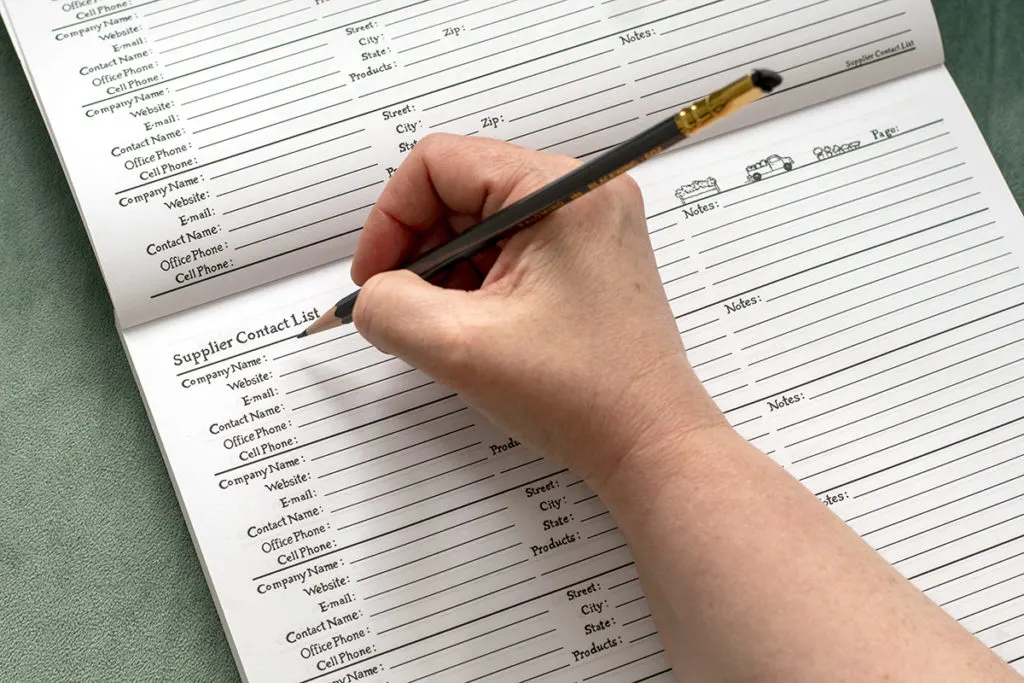
The planner’s creator suggests taking it to your local copy shop to have the binding removed and getting it 3-hole punched so you can keep it in a binder. Oh, my goodness, does this make my little stationery-loving heart happy.
If you’re a gardener who likes to document every little detail of the growing season, then this is the planner for you.
At the end of the year, you’ll have detailed information ready to tackle next year, or simply enjoy going back over the triumphs and trials of past seasons. You can order it by clicking here.
2. The Unripe Gardener’s Journal, Planner & Log Book
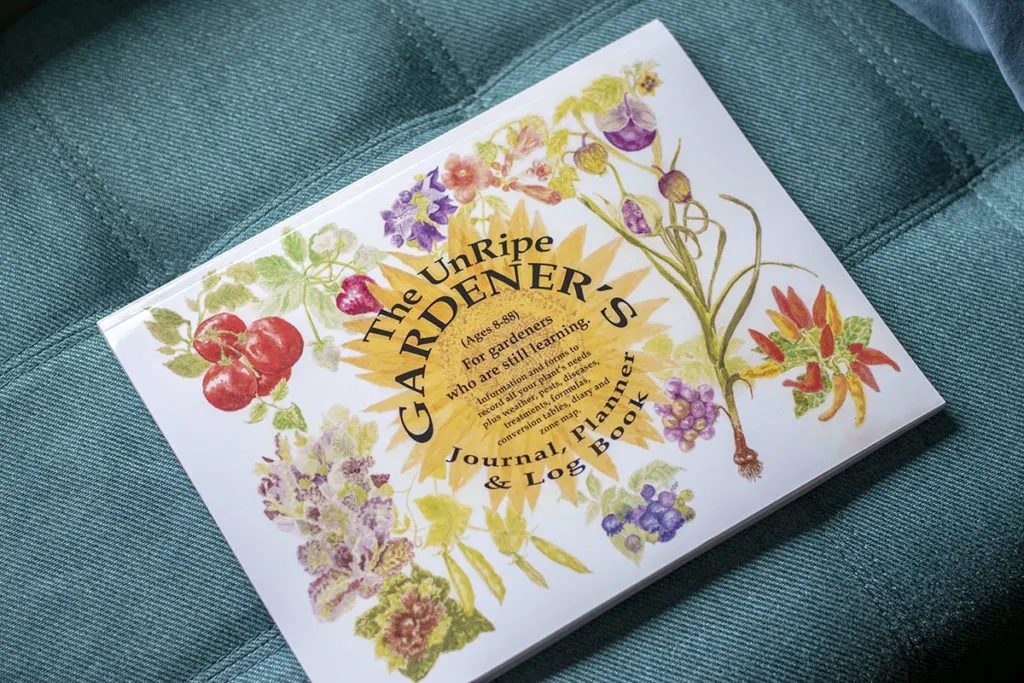
Next up is the smaller sibling to The Garden Journal, Planner & Log Book – The Unripe Gardener’s Journal, Planner & Log Book. While this particular planner didn’t have many reviews, it was suggested when I was looking at the last journal, so I thought I would take a chance on it. And I’m glad I did.
Again, with the crazy, long name.
TUGJPLB is meant to be a journal for the new gardener.
It’s trimmed down quite a bit from TGJPLB so as not to overwhelm the new gardener by having them fill in pages of information they may not use. The pages that are included are the same as in The Garden Journal, Planner & Log Book. However, there are more how-to and guideline pages in this planner, so you’re learning while you record your growing season.
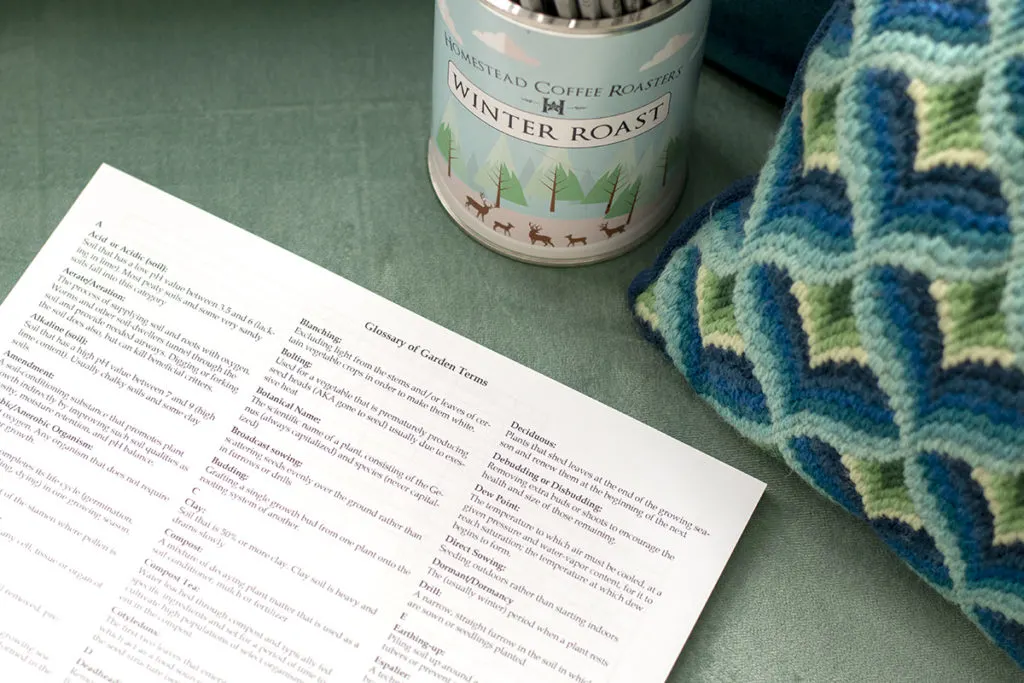
The planner is more generalized, letting you record most of your information in one place rather than on very specific pages as in the previous book.
Several sections are left out for this version, including the supplier contact list and purchasing records. There aren’t pages broken down into specific plant types, i/e—annual, biennial, perennial, veggie, herb, etc.
It’s a much less overwhelming layout.
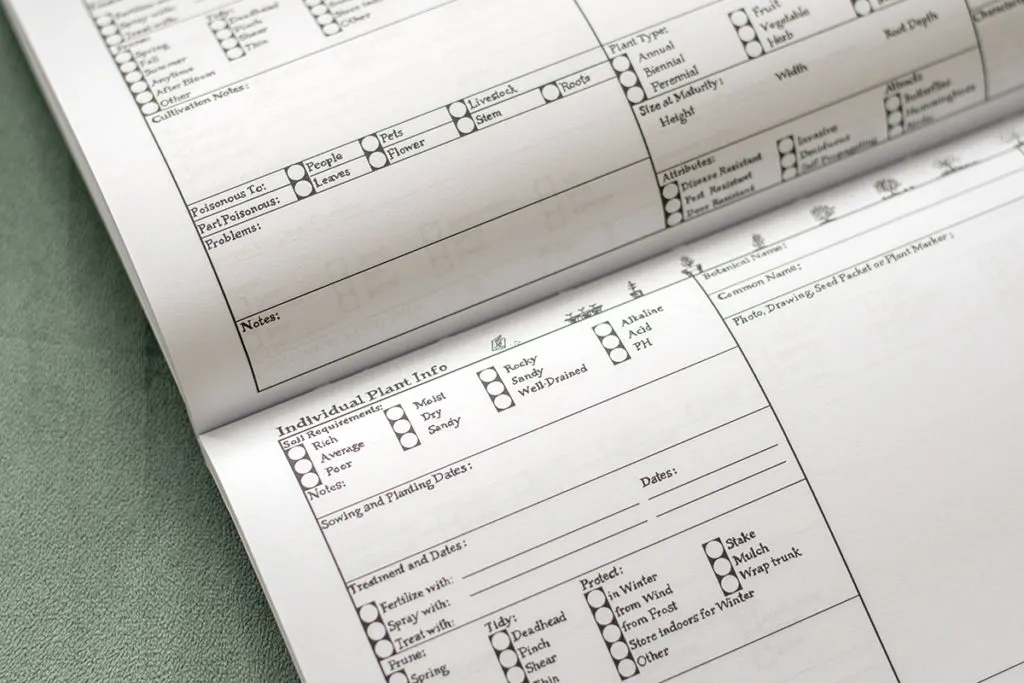
I think this planner would make an amazing gift for the new gardener in your life. It would be equally appropriate for a kid who’s interested in gardening too. Or it’s a great planner for yourself if you don’t need as much detail recorded and want a more general idea of your gardening season.
You can purchase the Unripe Gardener’s Journal, Planner & Log Book by clicking here.
3. The Gardener’s Logbook
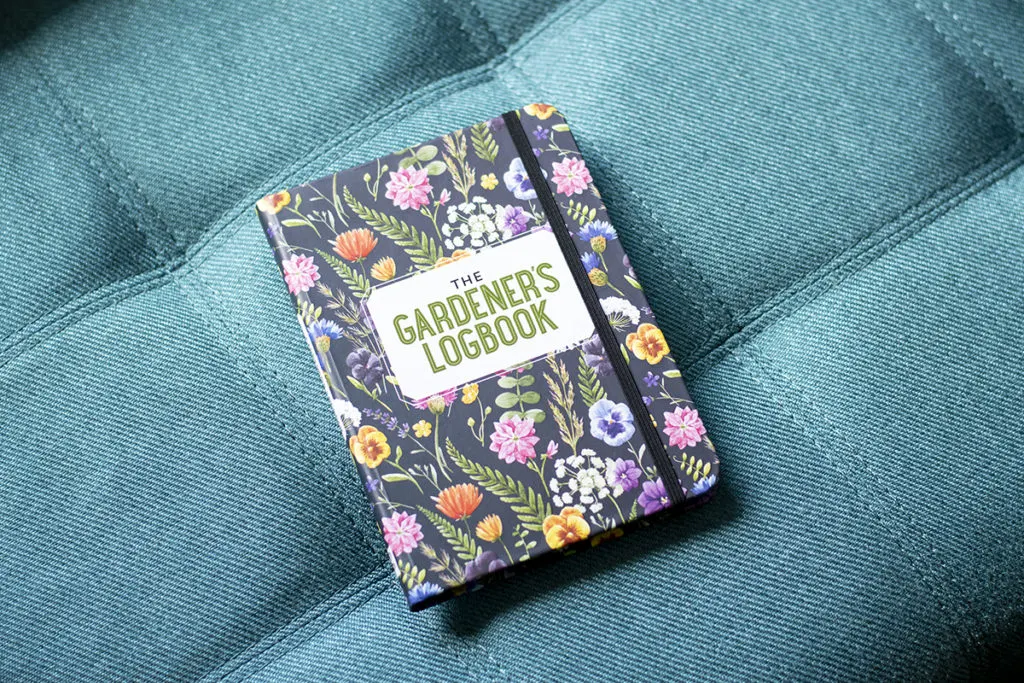
I’m going to start by saying this is the only planner out of the five I took a look at that I was a little disappointed with. It’s still useful and a decent planner, but there’s definitely room for improvement.
Again, this book to be used throughout a growing season or one year.
I love the beautiful cover art on this particular planner. I know this one won’t get lost in a stack of papers on my desk.
Depending on your needs, this planner is either perfectly simple and uncomplicated or disappointingly simple and lacking in features.
A big plus to this logbook is its size. It’s only 5″ x7″, making it small enough to tuck in your back pocket or apron pocket. Its smaller size makes it easy to have handy when you need it most – when you’re in the garden.
I have the memory of a gnat; if I don’t write things down right away, it’s gone. I love the idea of not having to lug a full-sized book around the garden and still being able to record important information as I come across it.
The logbook contains garden planning tips and hardiness zone information. Another nice feature of this planner that’s lacking in the others is it goes beyond the United States. There are websites for other countries and areas of the globe to find hardiness zone information. The other planners I’m reviewing have growing zone information only for the United States.
There are nine pages of dot-grid paper for planning gardens or drawings located at the back.
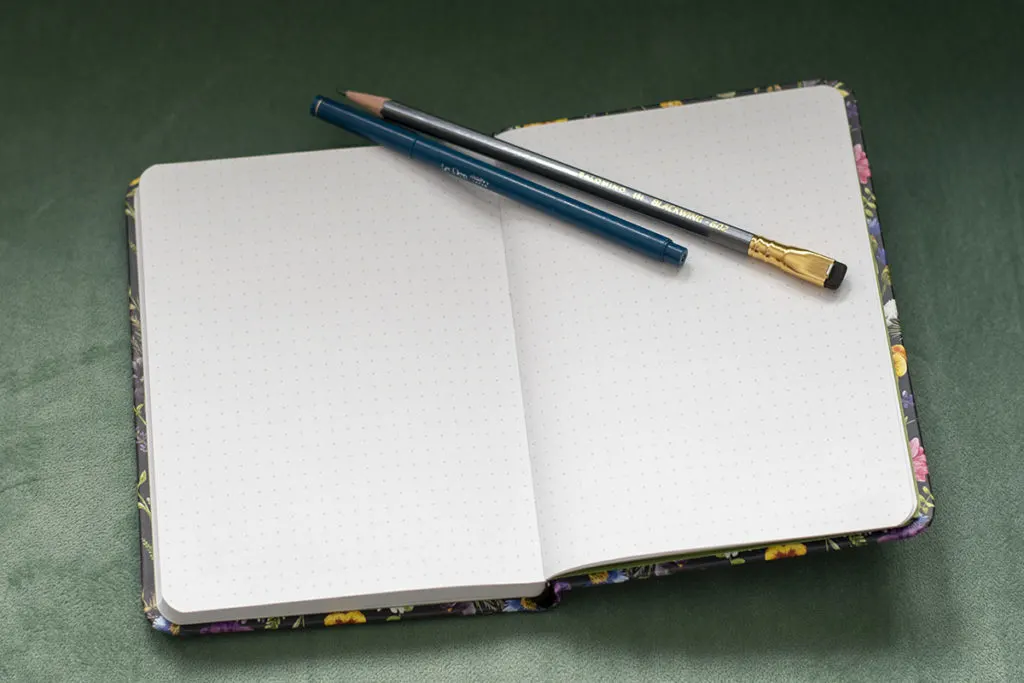
The bulk of the logbook is plant log pages.
I like the prompts for recording this information, and, as you can see below, I think it captures quite a bit of detail for each plant. Most of the book’s 144 pages are dedicated to plant logs, 125 pages of it to be exact.
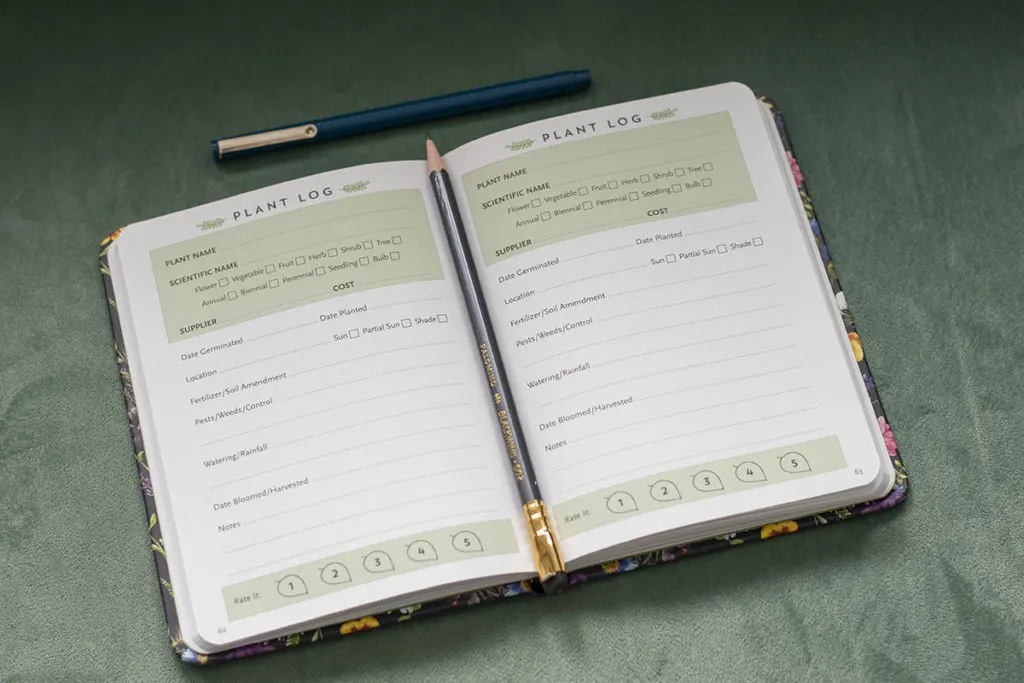
If you grow many different plants each season, this is the logbook for you.
My biggest gripe about this logbook is how difficult it is to go back and find pertinent information. Unless you come up with and input your information in a specific order, going back and finding a plant log entry could be difficult.
How do you quickly find that entry for the cucamelons you grew last year out of 125 random plants?
I’ve been thinking about it, and you could enter your plants alphabetically, enter them by type, veggies first, then herbs, then flowers. There is a myriad of ways for you to come up with to organize this information. But if you make changes during the growing season, then your system may be all out of whack.
This is the one area where I think this little logbook could improve – some way of making your plant logs searchable, and then it would be the perfect simple garden logbook.
And who knows, maybe that’s just me, it’s got great reviews on Amazon, so plenty of people are happy with it as is. If you want something super simple, this is a great gardening logbook.
4. The Family Garden Planner
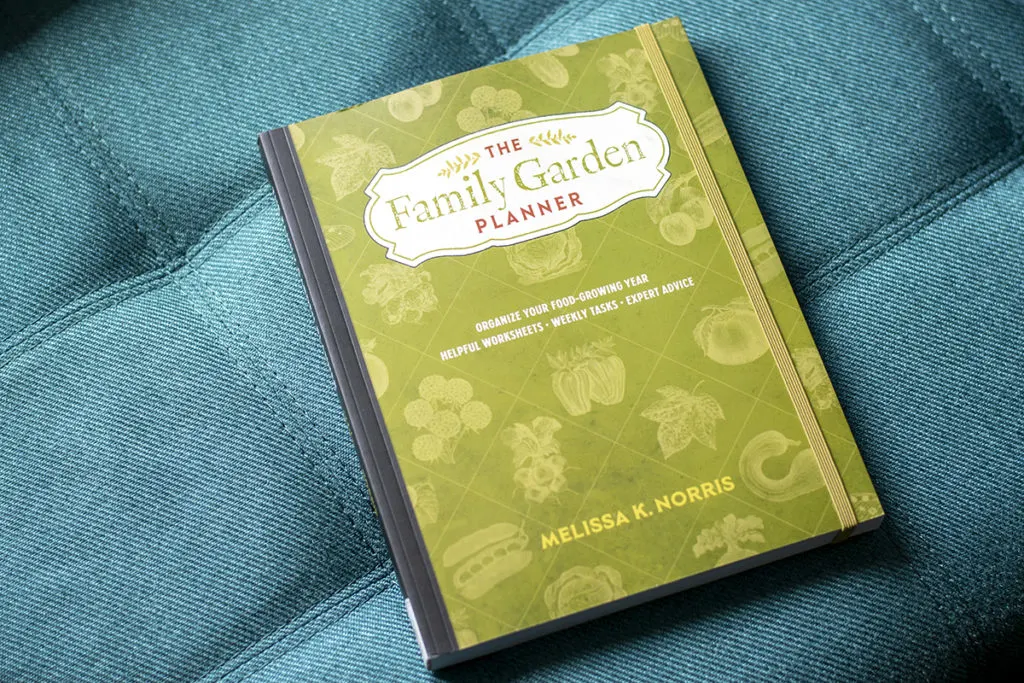
This is a serious garden planner. As soon as I began flipping through the pages, I thought, “Whoa, Melissa means business; she’s going to whip me into shape this gardening season.”
And that’s kind of the point. Melissa K. Norris is a homesteader and blogger out in Washington. She comes from several generations of homesteaders and offers some great information in this planner on how to feed your family for an entire year.
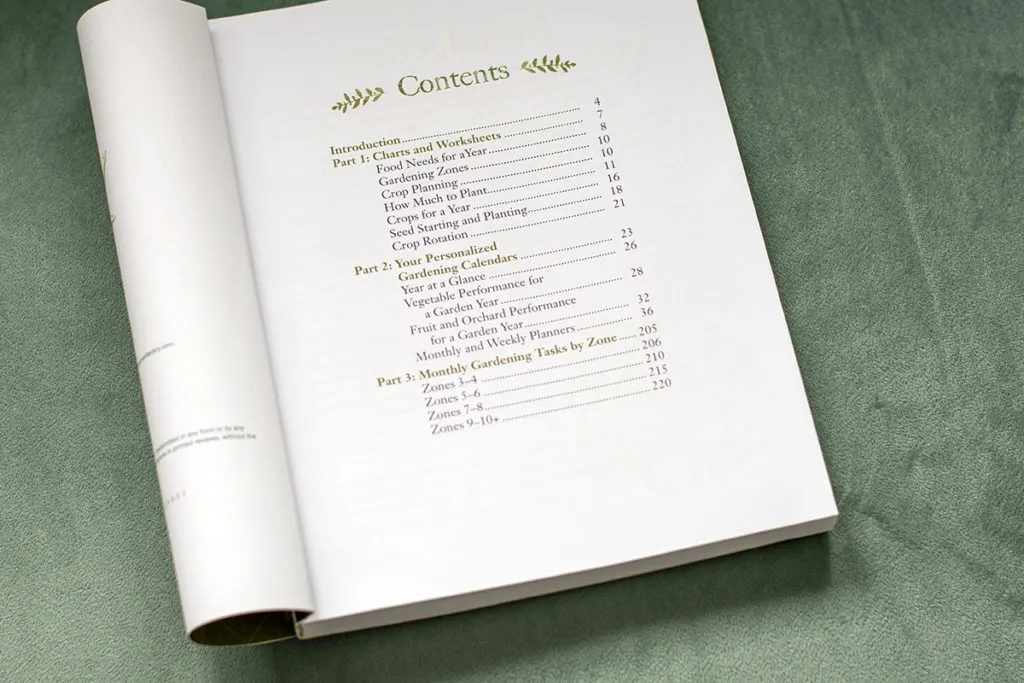
If you want to put as much food on the table as possible from your garden, grab this planner.
You won’t be sorry.
She starts you out with charts to help you figure out how much food your family consumes in a year and goes on to help you translate that into how much food you need to grow. (Don’t worry, it’s super easy to fill in.)
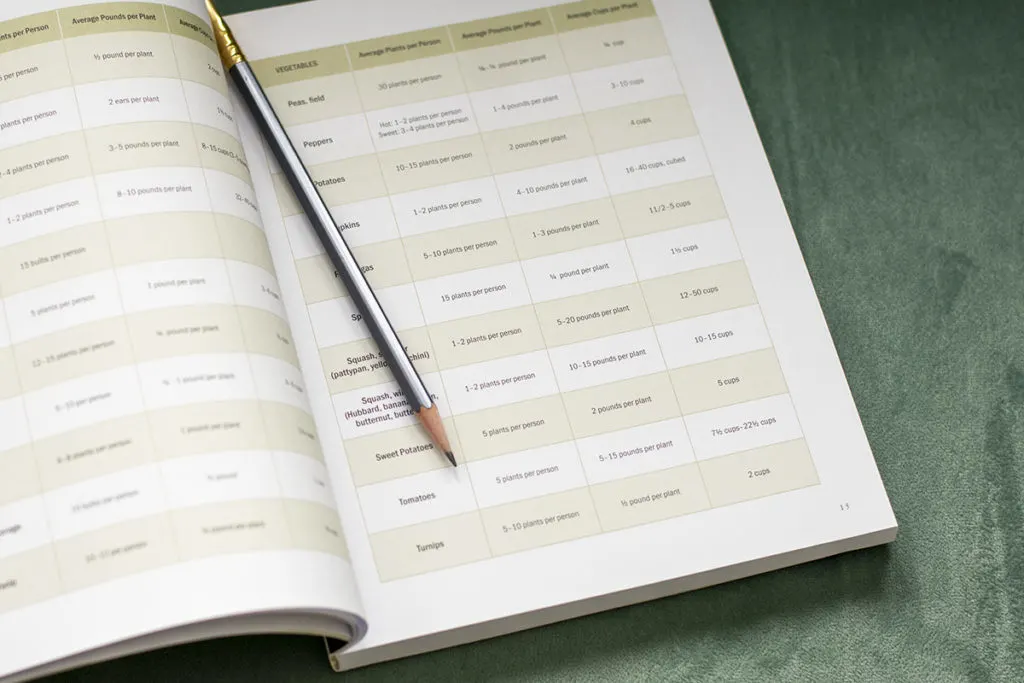
In fact, the first 21 pages of this planner are nothing but charts and worksheets to help you determine what to grow, how much to grow, when to grow, where to grow – you get the idea.
The rest of the planner contains monthly and weekly pages to track and plan what you need to do, or have done, or what’s happening.
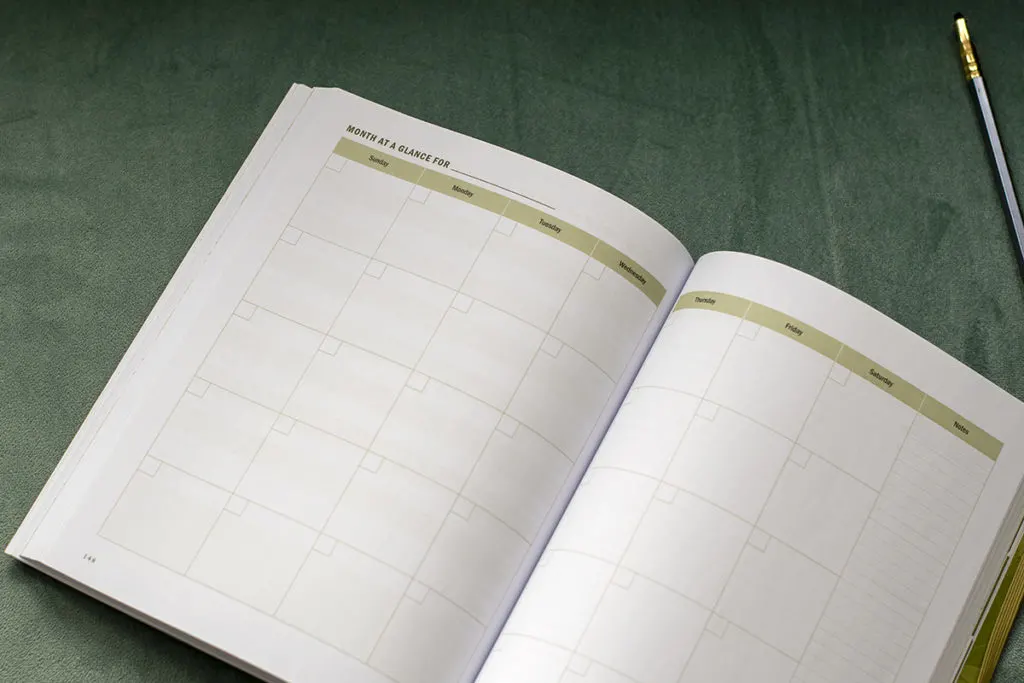
She even includes budget pages so you can see how much money you’re saving by growing your own food.
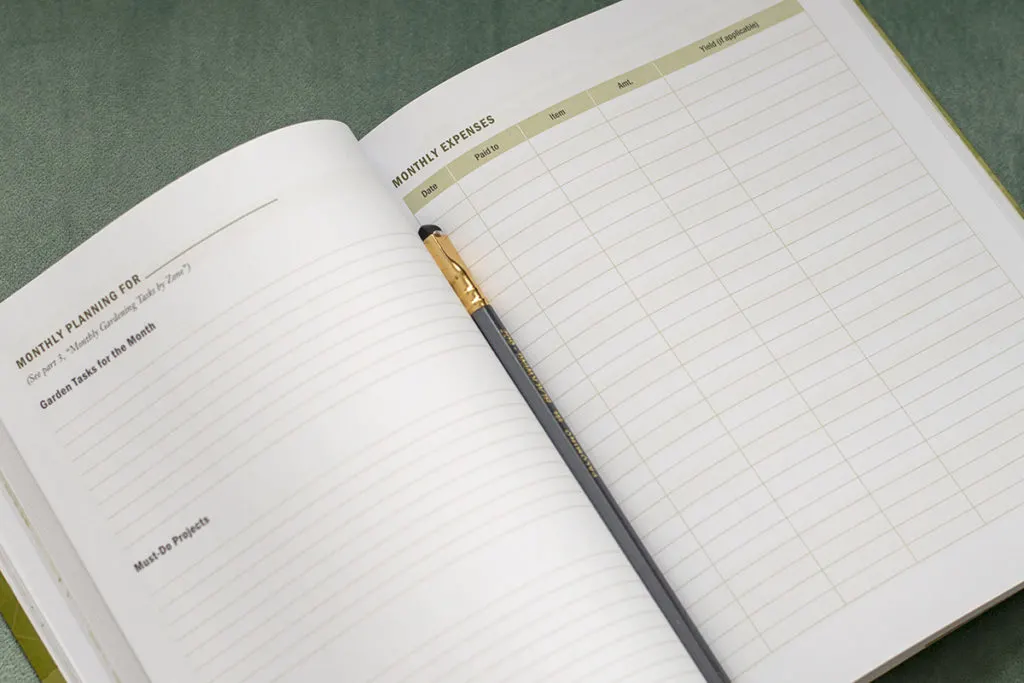
I love this! I know that growing food saves me money, but I love the idea of being able to see just how much it’s saving me. It’s such a great incentive to grow even more next year.
The last section of the planner is also super handy. It’s month-by-month guidelines on what you should be doing in your garden, all by growing zone. (Again, U.S. only.)
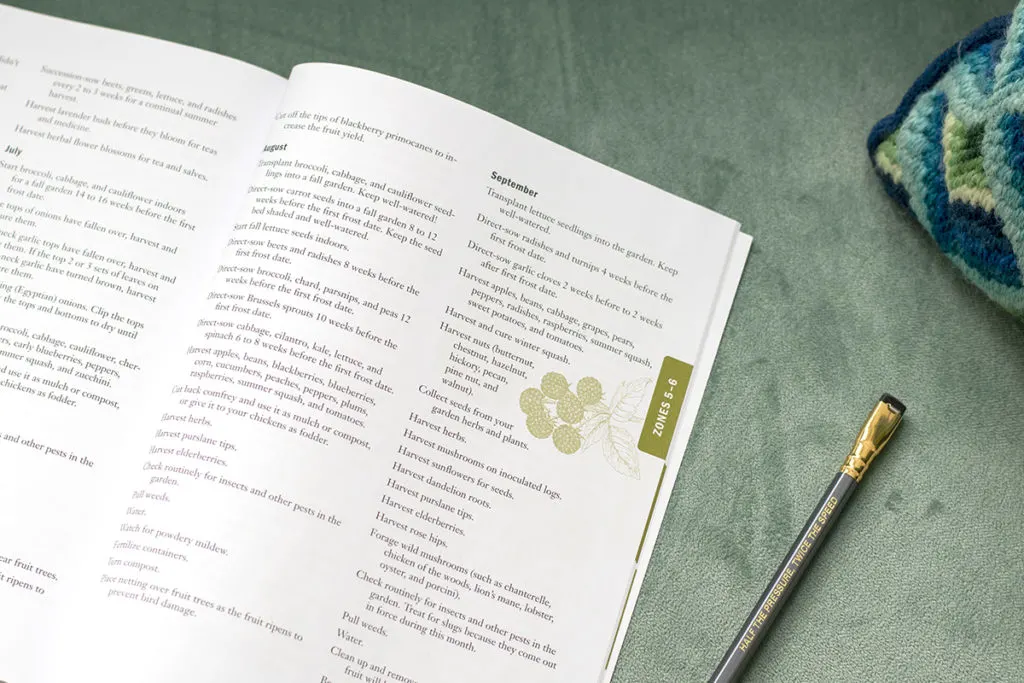
If you need a guiding hand to help you get the most out of your garden this year, this is your planner. Pick it up by clicking here.
5. A Year in the Garden – a Guided Journal
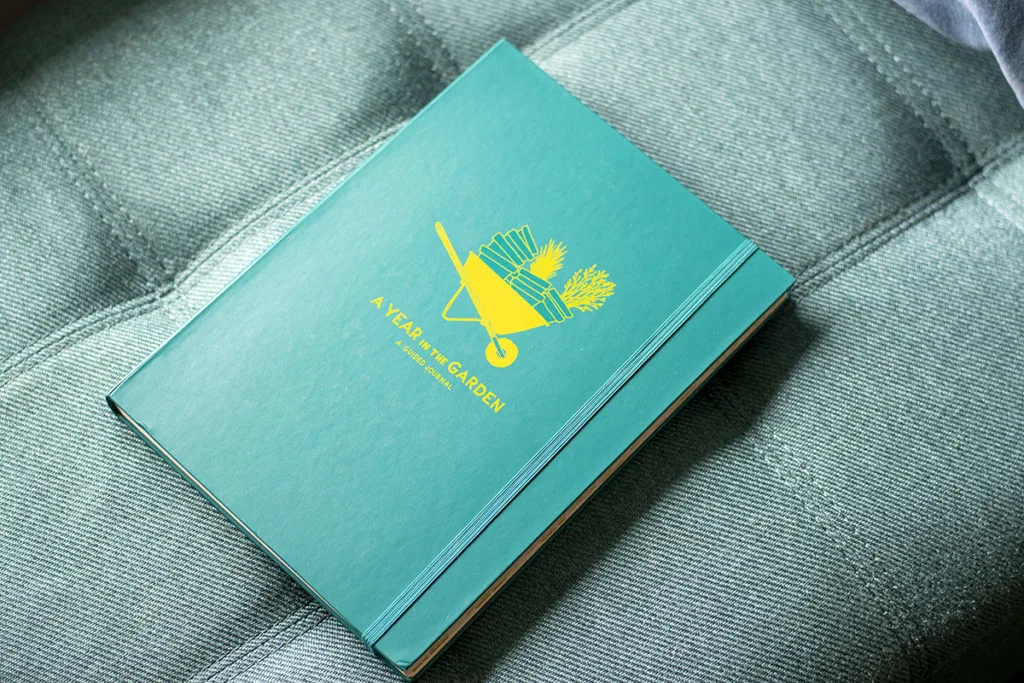
I saved this one for last because it’s my favorite. I love the idea behind this journal.
We all know gardening is hard work. Getting things to grow and successfully reaping a harvest takes time, planning, and a whole lot of energy. And sometimes, you just want to throw in the trowel. (Hehe. What? I haven’t made any puns in a while.)
This book is all about enjoying your garden.
It’s a lovely guided journal for your garden. Yes, it has places to plan things and record information, but more important are the gardening-related journal prompts.
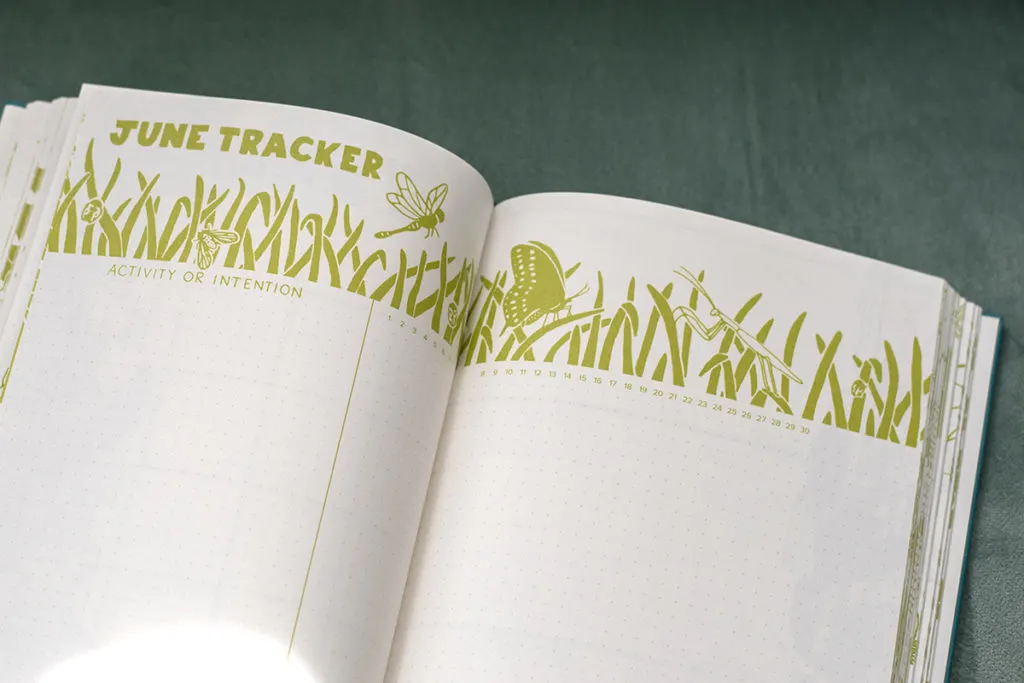
The artwork is cheerful and makes you want to draw and write in the journal.
It’s laid out in a monthly and weekly format for an entire year.
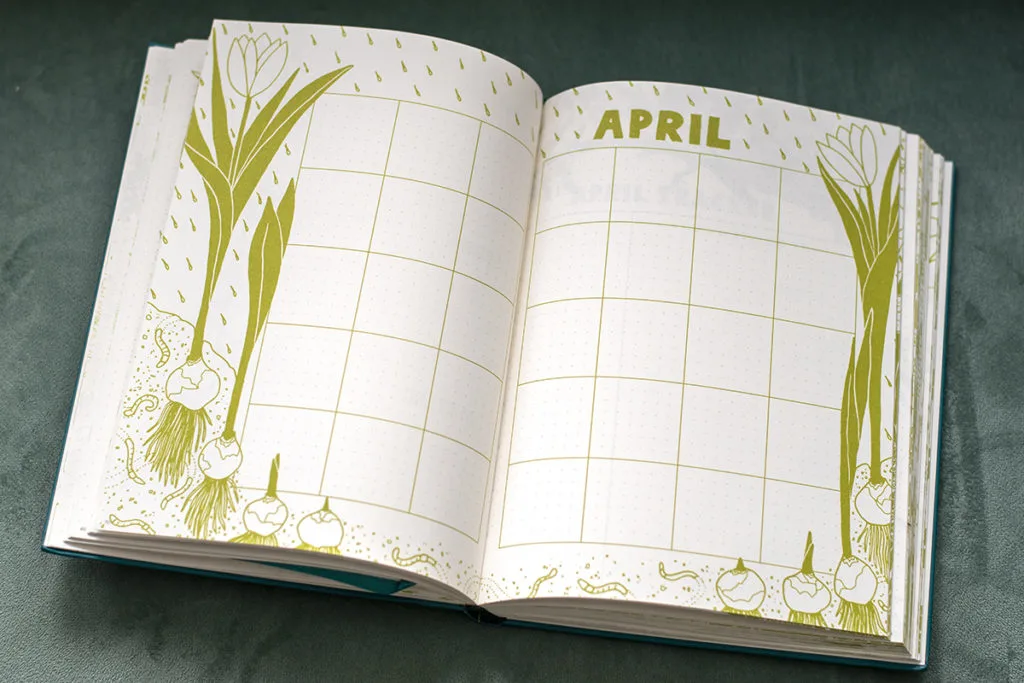
For each week, there are one or two journaling prompts that allow you to take a moment and think about and appreciate your garden and how it changes through the seasons.
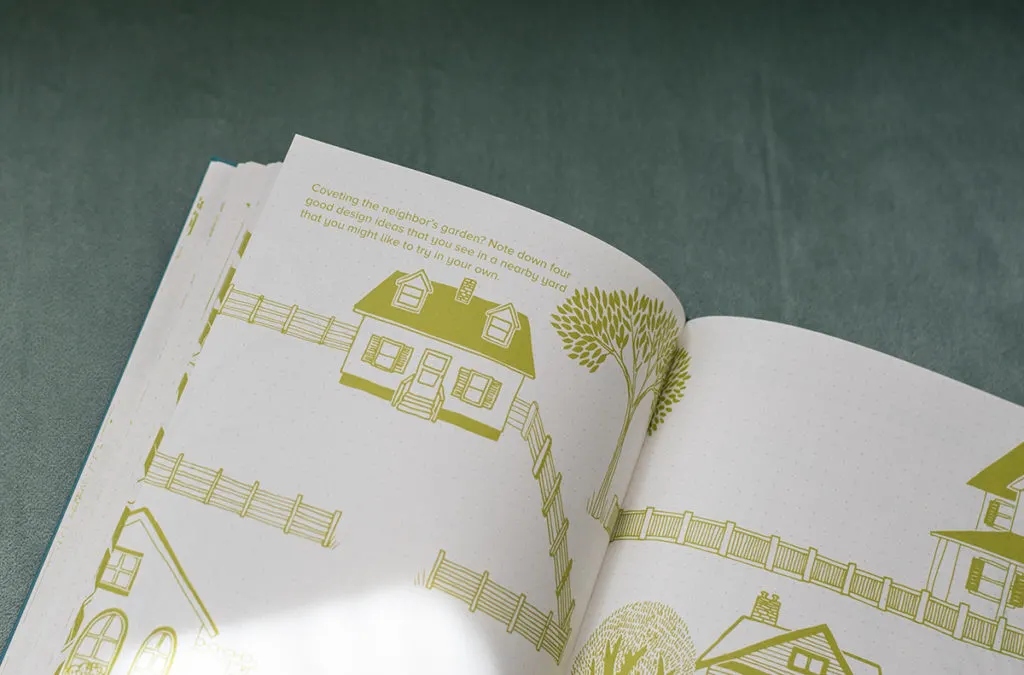
There’s plenty of space for drawing as well as writing on these pages.
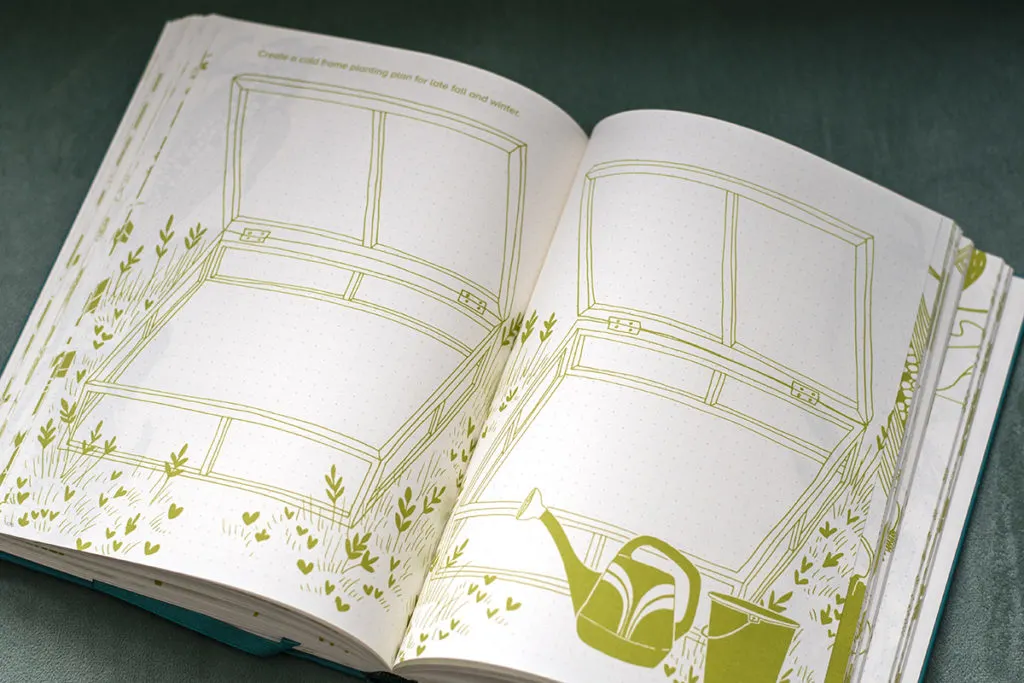
As I was flipping through these prompts, I lost track of the number of times I thought, “Oh, I never thought about that,” or “ooh, this one is going to be fun.”
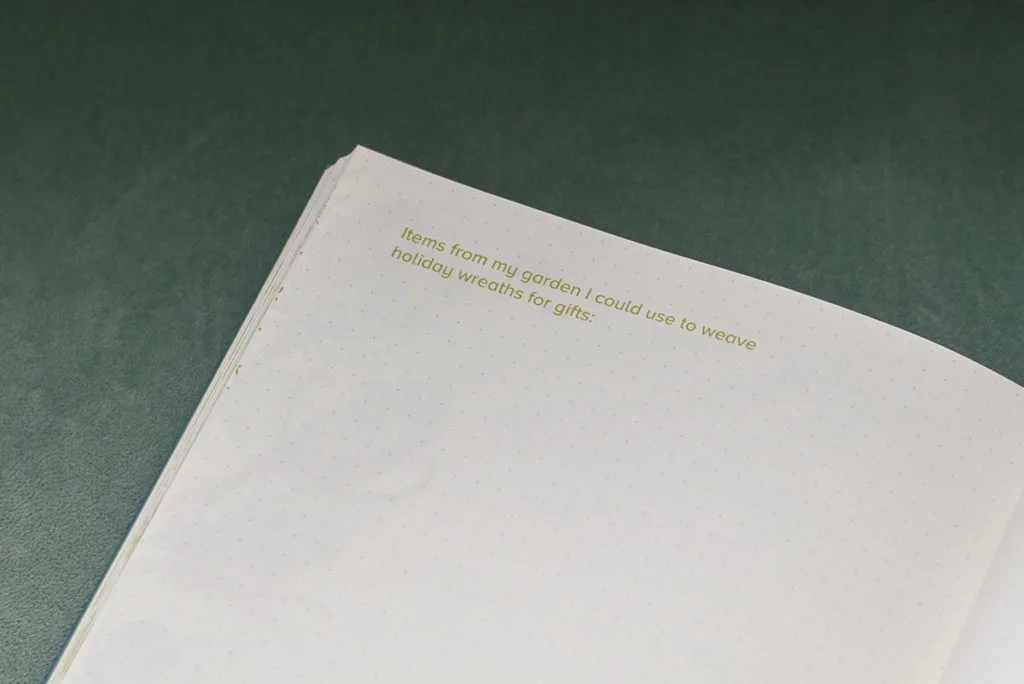
If gardening has become more of a chore than something you enjoy, I think this journal will help you find the joy of growing things again.
This is a great little journal to do, even if you choose to track your garden in another planner. It’s an entirely different approach to tracking your season, and you’ll end up with different information altogether.
If you want the perfect gift for the gardener on your list, I think this is it.
You can purchase the journal here. Maybe throw in some lovely colored pencils too.
So that’s it, folks. What do you think? Which planner is your favorite?
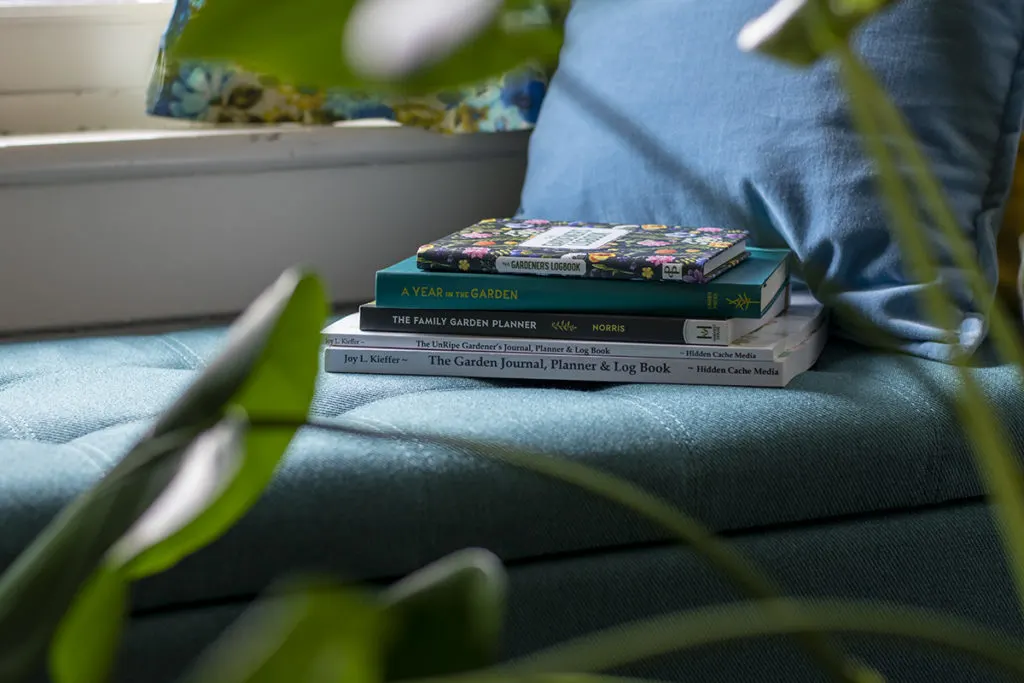
I’m still trying to decide which is my favorite. Each of them offers a great opportunity to continue your garden-tracking habit or start one. You’ll be glad you took the time to write down how your gardening season went for planning future years.

Get the famous Rural Sprout newsletter delivered to your inbox.
Including Sunday ramblings from our editor, Tracey, as well as “What’s Up Wednesday” our roundup of what’s in season and new article updates and alerts.

